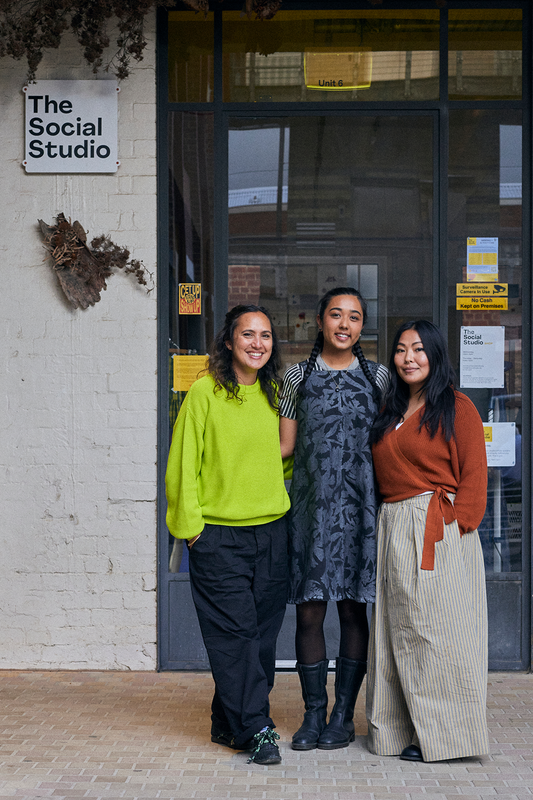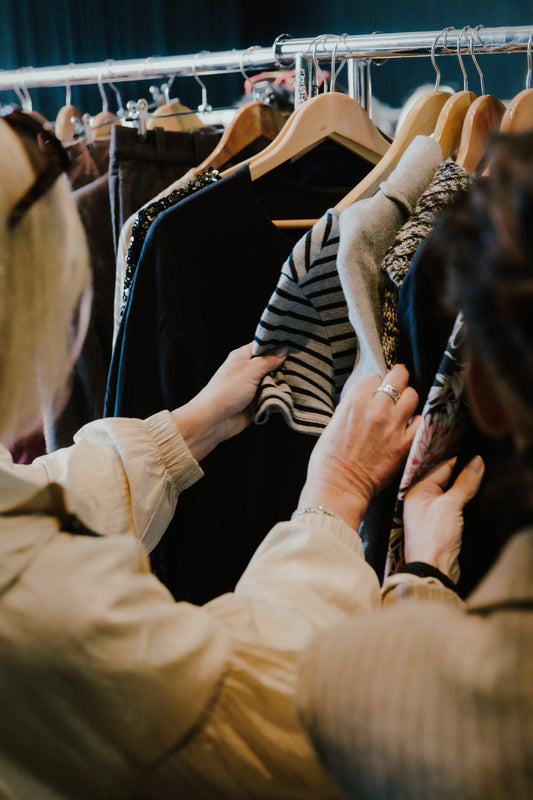For more complicated repairs, we prefer the Japanese patching technique of Sashiko to extend the life of our garments and reduce the impact on the planet by not only repairing it, but by adorning it.
At Kowtow we offer the Japanese patching technique of Sashiko to extend the life of our garments and reduce our impact on the planet. Sashiko is a great technique to reinforce the tear and add a decorative feature to the repair.
Equipment: Embroidery needle, embroidery thread, contrast coloured thread for basting, scissors, fabric patch, pins and embroidery hoop (optional).
Instructions:
- For the patch, you will need to make sure it is at least 3cm wider than the hole around all edges. Fold the raw edges in 1cm and press to neaten. Sashiko usually uses embroidery thread, so you will need to use a thicker needle.
- You can use an embroidery hoop to help stabilise the area you are going to repair and ensure that the fabric stays flat. Turn the garment inside out and temporarily secure the patch to the garment, by pinning the patch over the hole, just to hold the patch in place.
- Temporarily secure the patch to the garment using a long running stitch around all edges of the patch. This stitch doesn’t have to be neat, it just needs to hold the patch in place and will be removed at the end. This is called a basting stitch.
- Cut a suitable amount of thread for the pattern you want to create and re-thread the needle with the thread that you want to use. You want to work with the outside of the garment facing up, and an easy way to start can be to fill the basting stitch shape with multiple rows of small horizontal and vertical stitches.
- Work from left to right. Start by bringing the needle from back to front at the bottom left corner, so the knot is secured on the inside of the garment. From here, bring the needle from front to back, and back to front, this is called a running stitch. You can try to keep the stitch length consistent, or you can have the freedom to make it look how you want.

- At the right hand side of the shape, you are then going to work back over the stitches in a horizontal line to reinforce the stitches.
- Once you reach the end of the pattern, turn the garment inside out and finish on the inside of the garment by threading the needle from front to back. Tie off the thread by creating a loop, threading the needle through and tightening. Repeat this twice and then trim the thread close to the knot. Remove the basting stitch by cutting one end and pulling it through.




